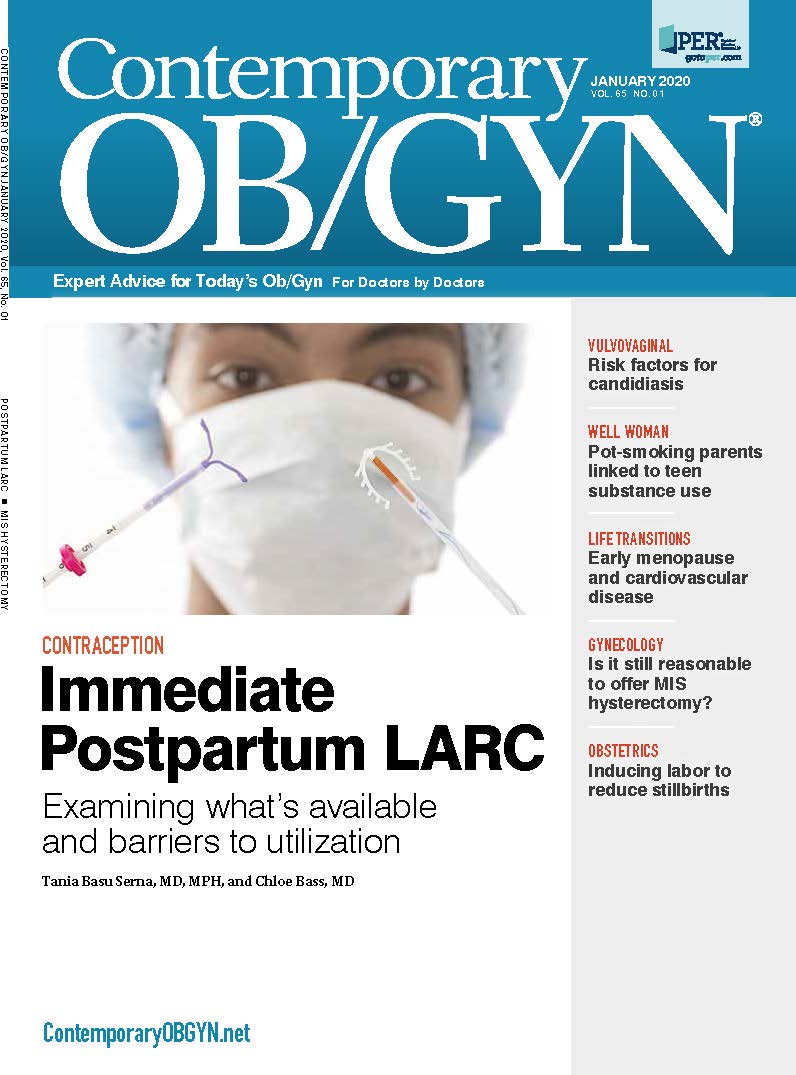Microbiota composition, receptive oral sex may be risk factors for candidiasis
Published research from Sexually Transmitted Diseases indicates a woman’s risk of vulvovaginal candidiasis could be increased by certain personal behaviors as well as the composition of her vaginal microbiota.
©designer491 - stock.adobe.com

Vulvovaginal candidiasis (VVC) is relatively common, and published research from Sexually Transmitted Diseases indicates a woman’s risk of it could be increased by certain personal behaviors as well as the composition of her vaginal microbiota. Candida albicans is the most common etiology for VCC and this study looked at what factors are associated with its molecular detection. The objective of the study was to better understand epidemiologic factors associated with molecular Candida albicans detection and to evaluate how the vaginal microbiota and relative abundance of individual bacterial taxa differ between women with and without C. albicans detected using molecular methods.
Methods
For the cross-sectional study, vaginal swabs were self-collected by 394 nonpregnant, reproductive-age women. The participants submitted two swabs; one was used to characterize the composition and structure of the vaginal microbiota and the other was used the prepare a smear for Nugent Gram stain scoring.
The authors were able to detect C. albicans using polymerase chain reaction targeting C. albicans ITS1/2 region. Vaginal microbiota was characterized using 16S rRNA gene amplification sequencing of the V3 to V4 hypervariable regions and then clustered into community state types (CSTs).
Five primary CSTs were identified in this study; four dominated by Lactobacillus species (L. iners, L. crispatus, L. gasseri, L. jensenii), plus one lacking significant numbers of Lactobacilliand characterized by higher proportions of strict and facultative anaerobic bacteria (termed CST IV).The authors used multiple logistic regression to identify risk factors associated with C. albicans detection.
Findings
The authors detected C. albicansin in 21% of vaginal samples (83 of 394). Women in whom C. albicans was detected were more likely to report use of tampons, engage in receptive oral sex, and use of over-the-counter (OTC) antifungals to self-treat for vaginal infections before seeing a doctor for examination.
Neither self-reported diagnosis of VVC nor bacterial vaginosis in the prior 60 days were associated with C. albicans detection. Furthermore, detection was not associated with vaginal pH, reporting any type of vaginal symptom in the past 60 days, age, history of pregnancy, use of hormonal contraception in the past 60 days, number of recent sexual partners, or other forms of sexual activity in the past 60 days.
In multivariable modeling, women with a L.crispatus-dominated CST had increased, but not statistically significant, odds of C. albicans detection compared with a low-Lactobacillus CST IV after cofactor adjustment of receptive oral sex and a history of self-treatment with OTC antifungals (adjusted odds ratio, 2.05%; 95% CI 0.97-4.37, n=323). However, using the same model, antifungal use and receptive oral sex were significantly associated with C. albicans detection, with a dose-response trend for increasing frequency of oral sex and escalating odds of C. albicans detection.
When assessing individual bacteria to determine if there were taxa that were most likely to be associated with C. albicans detection, the authors identified L. crispatus, Lactobacillus coleohominis, Prevotella oris, and Prevotella veroralisas being in higher relative abundance in women in whom C. albicans was detected. In women without C. albicans, the authors more abundant Mobiluncus, Moryella, andFusobacterium.
Conclusions
The authors believe their findings indicate that L. crispatus-dominated vaginal microbiota may be associated with increased C. albicans detection. They also point to receptive oral sex as a risk factor for C. albicans colonization. Further studies are recommended, and the authors suggest focusing on what roles the vaginal microbiota and host immune response play in the transition from asymptomatic colonization to symptomatic VCC.

